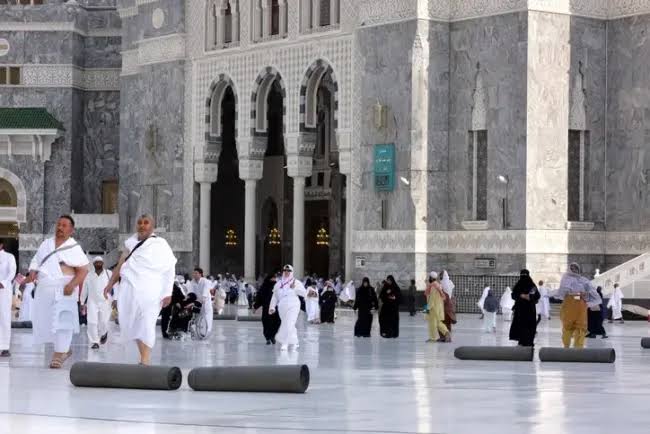In the pale hush between Maghrib and dusk, a square in a historic city can become a theatre of memory.
A brass crescent on a mosque gate glints as the crowd gathers: elders, students, parents with children perched on their shoulders. A nasheed threads its way through the air, its cadence a patient drumbeat for the heart. They are there to recall the birthday of Prophet Muhammad, sallallaahu alayhi wa sallam, to pay homage to an exemplary life, and to measure the act of remembrance against a long, living tradition. The Mawlid—often translated as the celebration of his birth—lands, in different places and at different times, as a contest of interpretation: Is it permissible, commendable, or forbidden? Is it a luminous moment of devotion, or a perilous drift into novelty? And, in the best readings of the Prophet’s Sunnah, what is the closest path of remembrance to his own example?
This is not a polemic masquerading as journalism, nor a sermon delivered on a street corner. It is a public account of a conversation that has spanned centuries, carried forward by families gathered in kitchens, imams in minarets, scholars in libraries, and lay readers who encounter the Prophet’s life as a living text. It asks not merely whether Mawlid should be celebrated, but what kind of celebration sustains faith, honours monotheism, and builds a community of mercy. The question, like the light of a late autumn sun, refuses to be reduced to a single line. It invites a chorus—voices across schools of thought, across cultures, across diasporas—that together map the terrain of devotion with care.
Devotion as pedagogy and communal renewal
In many quarters, Mawlid is welcomed not as a flourish, but as a pedagogy —a structured pedagogy of remembrance that makes the Prophet’s life tangible to the living. The argument is not simply sentimental; it is a claim about how memory, education, and communal life fuse to sustain faith.
• Expression of love and gratitude: Proponents insist that Mawlid embodies a public, tangible sign of affection for the Prophet. This is not performative show; it is a deliberate practice of gratitude, taqwa, and ethical living. The birthday becomes a mirror in which the beloved exemplar reflects virtue—humility, mercy, courage, patience—and the community pledges to imitate those traits in everyday conduct.
• Educational and communal value: The event operates as a mobile classroom. Reciters and teachers present the seerah, weave hadeeth into accessible narratives, and render the life of the Prophet into practical instruction for children and adults alike. The gathering—whether through nasheeds, poetry, lectures, or recitations—transforms public space into a shared study hall, animated by reverence and collective intention.
• Historical precedents and regional practice: Advocates point to a long history in which Mawlid gatherings were tolerated or encouraged, especially in regions where local scholars wrote or spoke about praising the Prophet and recalling his character. They argue that strict uniformity across time and space is neither possible nor desirable; regional temperaments and historical conditions shape how Mawlid is observed, so long as the emphasis remains on remembrance, prayer, and learning rather than extravagance.
• Reframing bid‘ah in light of intention: The crucial argument is pragmatic and theological. If a Mawlid event stays within Qur’anic guidance and the Prophet’s spirit—focusing on praise, supplication, and knowledge—it can be recast as a permissible or even commendable form of worship. The charge of bid‘ah, they contend, should not be wielded as a blunt instrument against anything novel that serves piety and community cohesion.
In this camp, caution is not a dull ache of fear but a principled stance: the belief that religious practice can drift from its roots, or from decorum, or from the purposes of worship. Hence the insistence on modest means, doctrinal clarity, and avoidance of practices that edge toward shirk or superficial spectacle. The aim is the alignment of intention with action: devotion that disciplines the heart, purifies the intention, and sharpens conscience.
Fidelity to the earliest generations
Opposing Mawlid celebrations in public, in clear terms, a substantial body of scholars argues that Mawlid does not belong to the Prophet’s established Sunnah and, as such, constitutes bid‘ah. The posture is not cynicism toward devotion but fidelity to the earliest centuries of Islam and to the means by which the faith was transmitted and practised.
• Absence of explicit command or endorsement: Detractors point to a lack of a clear, universal prophetic command to observe Mawlid as a religious obligation or a defined ritual. The evidentiary basis is described as indirect, contingent, or open to various readings, rather than prescriptive. Without explicit command, elevating Mawlid into a mandatory or canonical practice risks imperilling the precision of religious obligation.
• Salafist precedent and the discipline of the early centuries: Critics argue that the pious predecessors—the Salaf—offered a model of discipline, purification, and devotion that did not include the institution of Mawlid as a formal ceremony. The absence of such a practice among the earliest generations is read as a sign that it falls outside the Prophet’s demonstrable praxis, or at least outside the consensus on form.
• Concerns about imitation of non-Muslim customs: A recurring theme is the fear that Mawlid’s public manifestations—parades, creative displays, seasonal celebrations—can resemble Christian Christmas or other non-Islamic rites. The worry is not that devotion to the Prophet is itself improper, but that public celebrations adopt forms that are culturally iconic outside Islam, thereby eroding doctrinal boundaries.
• Risk of distraction and excess: The critics warn that Mawlid can become a social affair—fundraising, feasting, and symbolic displays—that eclipses worship or study. The danger lies in reducing sacred acts to spectacle or commerce, and in privileging social visibility over spiritual depth.
Within this camp, nuance exists. Some scholars permit private remembrance and spiritual reflection on the Prophet’s life while opposing public, organised Mawlid ceremonies. Others allow Mawlid only under stringent conditions—modest gatherings, avoidance of extravagant expenditure, and emphasis on education and worship rather than showmanship. The shared concern is fidelity to a precisely defined practice, measured against fundamental liturgical criteria and the example of the earliest generations.
Cautious openness tethered to principle
Between the poles of acceptance and rejection lies a space increasingly familiar in modern discourse: a calibrated openness that seeks to harmonise reverence for the Prophet with fidelity to religious sources. The contemporary middle ground is not a surrender to novelty but a careful negotiation of form, intention, and outcome.
• Contextual permissibility with boundaries: The essential claim is that Mawlid may be permissible if anchored in credible sources and guided by scholarly consensus. The emphasis falls on niyyah (intention) and form, including praise of the Prophet, contemplation of his character, and instruction in his teachings. Any practice that amounts to bid‘ah, shirk, or excess is rejected.
• Focus on virtues rather than spectacle: The middle-ground approach prioritises the Prophet’s virtues, ethical exhortations, and cultivation of piety. It welcomes educational activities—lectures on seerah, discussions of prophetic ethics, communal prayers—while discouraging loud, ostentatious displays or the exploitation of the event for political or commercial ends.
• Local tradition and cultural resonance: Islam’s history is a history of cultural adaptation within the frame of tawhid. In places where Mawlid has deep roots and is conducted with care for Islamic law and decorum, it may be regarded as culturally legitimate. In contexts lacking historical precedent or in environments with competing local practices, caution and discernment guide judgment.
What counts as closest to the Prophet’s Sunnah?
A question that recurs in mosques, seminar rooms, and interfaith dialogues concerns which approach best mirrors the Prophet’s Sunnah. The answer is not reducible to a single ritual, but to a constellation of guiding principles.
• Adherence to primary texts: The Qur’an and the Sunnah must sustain every devotional act. If a practice stands in tension with these sources, it cannot claim proximity to the Prophet’s example.
• Avoidance of bid‘ah in form and intention: Any practice that introduces beliefs, rituals, or forms not anchored in established tradition, or that resembles externals of non-Islamic religion, risks deviating from the Prophet’s path.
• Intention and content over form: A modest remembrance, conducted with sincerity and humility, and focused on the Prophet’s character and teachings, can be more faithful to the Sunnah than a grand public ceremony lacking spiritual substance.
• Emphasis on taqwa, knowledge, and communal welfare: Actions that uplift moral conduct, deepen understanding of Islam, and benefit the vulnerable reflect the Prophet’s mission and ethos and thus approximate his example more closely.
In practice, the best path for many scholars is one that keeps Mawlid within the discipline of worship and learning. A community whose Mawlid fosters compassion, social responsibility, and ethical devotion, with emphasis on the Prophet’s teachings rather than ceremony for ceremony’s sake, may be judged more consonant with the Prophet’s spirit. Conversely, a Mawlid that becomes a spectacle, that disperses attention from spiritual aims to appease crowds or to project social prestige, risks straying from the Prophet’s example.
A note on sources, scholarship, and living tradition
The debate over Mawlid is a testament to Islam’s richly braided scholarly tradition. It draws on the Qur’an and Hadeeth, on the consensus and reasoning of the four main schools of law, and on centuries of jurisprudential discourse. Contemporary voices bring the dissonance and promise of modern pluralism: the reality of diaspora communities, the pressures of migration, and the needs of a global audience seeking spiritual nourishment without compromising doctrinal integrity. The conversation is not monolithic, but a chorus of voices, inviting mutual listening and careful discernment.
The question, finally, is not whether Mawlid exists in certain texts, but how a community orders itself around the Prophet’s example: in humility, in mercy, in the relentless pursuit of justice and knowledge. If a Mawlid gathering embodies these values—devotional reverence, learning, charity, and unity beneath Allah’s sovereignty—then it speaks with grace to a divided world. If it shadows these traits with excess, confusion, or vanity, it speaks with the harm of misdirected devotion.
A concluding meditation
The Mawlid conversation is, in the final reckoning, a test of how religious communities negotiate memory, authority, and desire for closeness to Allah. It is a test of how to balance reverence for a beloved Prophet with the humility that recognises finite human judgment. It is a story of continuity and renewal—the old words seeking ever-new mouths, the ancient acts seeking ever-widening horizons of meaning. The Prophet’s own life, as recounted and interpreted through centuries of reflection, invites us to cultivate the virtues that he embodied: mercy, justice, generosity, patience, and a perpetual call to worship the One God.
If the aim is to approach the Sunnah most faithfully, the answer lies not in a single ritual but in a conscientious, principled discipline that places worship, knowledge, and moral action at the centre. Mawlid, in its best light, can be a conduit for that discipline—so long as the intention remains clear, the form modest, and the content anchored in the sources that have guided Muslims through ages of doubt and change. The challenge is not to police the heart’s devotion but to guard its integrity, to keep the Prophet’s example alive in a way that is both humane and true to the divine message.






